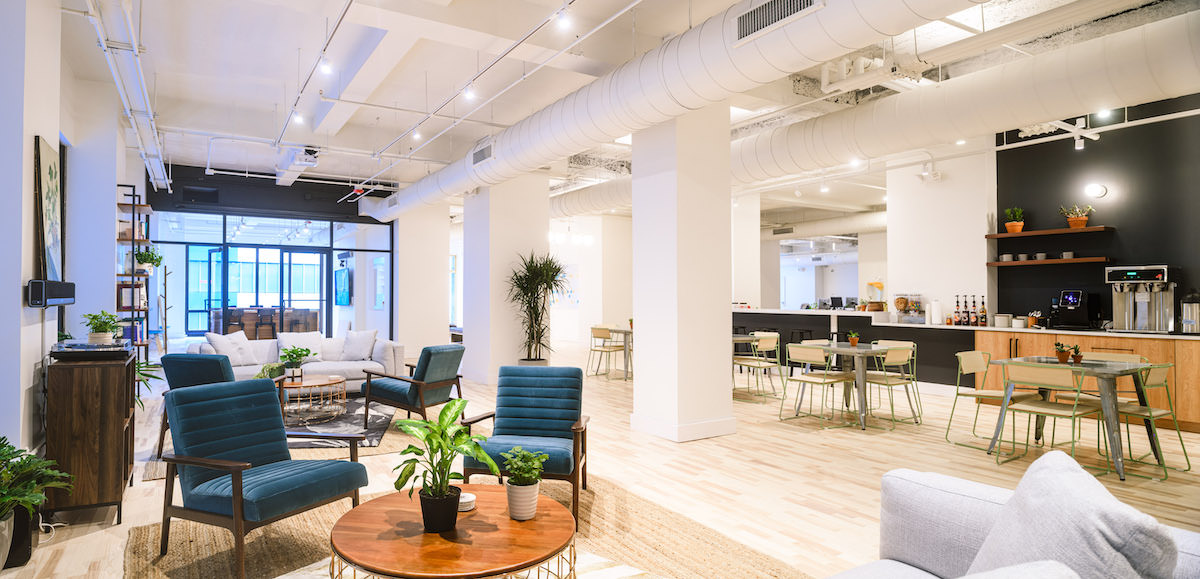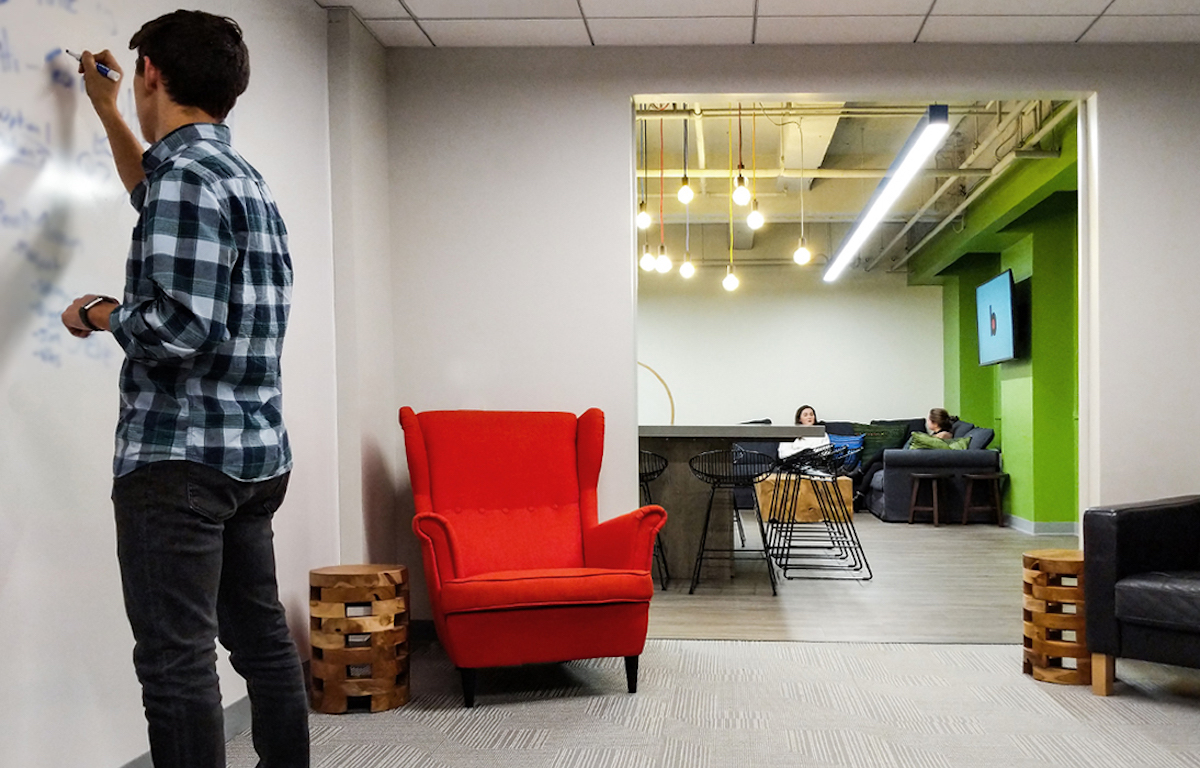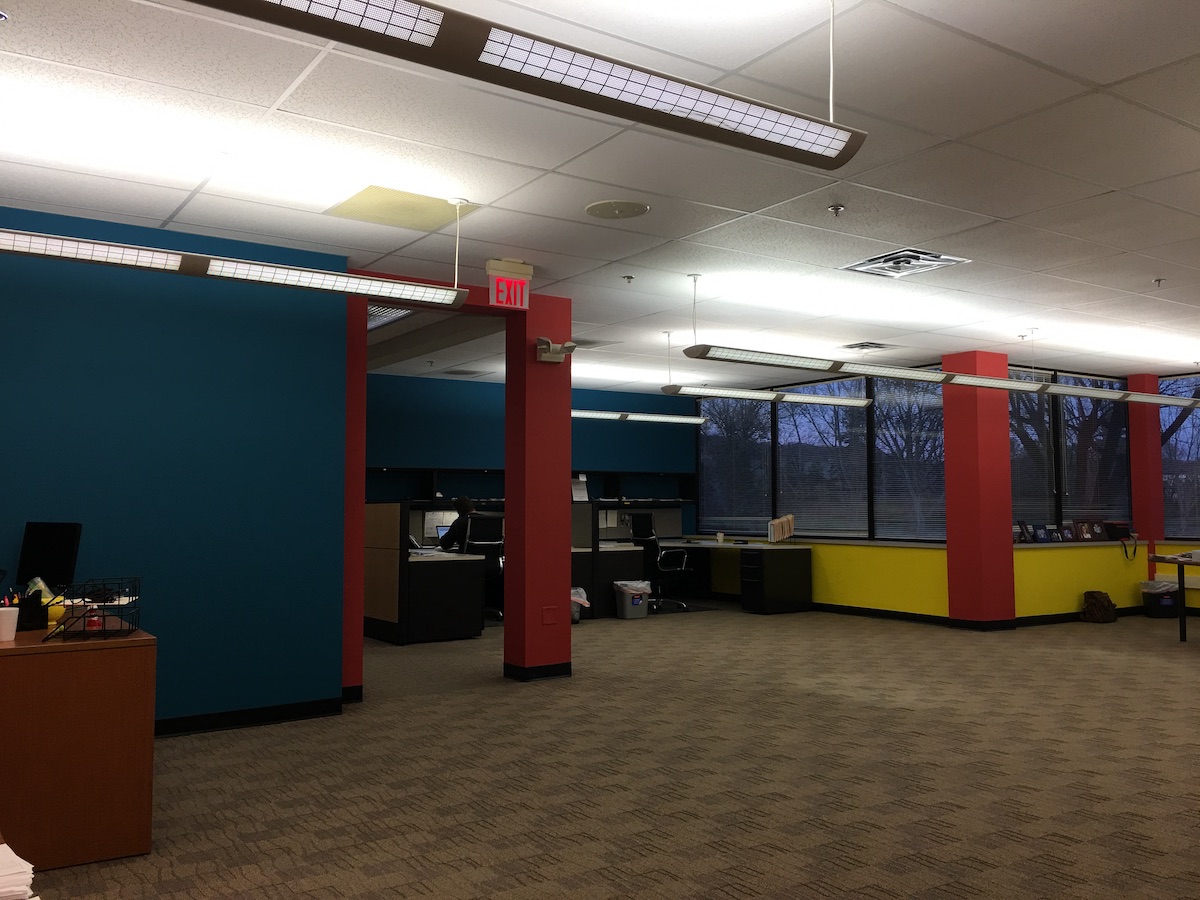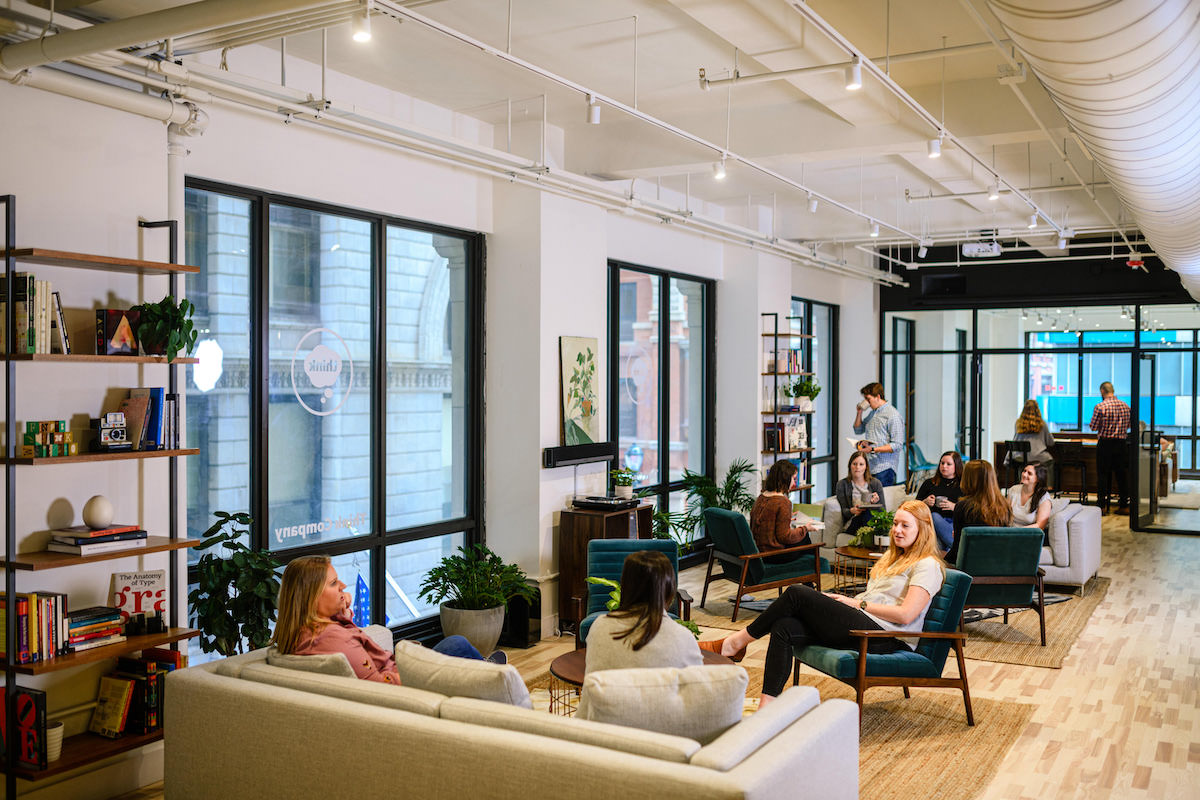When companies set out to plan their space, there’s lots to consider — how it functions, how it looks for employees and guests, but also how it feels.
Being able to express the company’s purpose through its office space has become more important in recent years, and more companies have moved toward open-concept plans — for better or worse — favoring communal space for closed-in offices. It’s rare to visit a company that’s still assigning cubicle space.
Translating the values and aesthetic of design firm Think Company was essential in the company’s recent office expansion, according to its director of marketing, Suzanne Cotter.
The firm, founded in 2007, recently tripled its office space to 15,000 square feet in the Philadelphia Building. The company now takes up the building’s entire second floor, where more than 100 employees work.
This team made design decisions based on “the specific needs of Thinkers and clients while also considering accessibility as a core design principle, current and future uses of the space, and the company’s own core values,” Cotter said.
The office includes features like open collaboration and social spaces featuring open working, whiteboards, meeting and kitchen space; accessible and ADA-compliant design; and private areas such as a mother’s room and wellness rooms.

Think Company also had custom furniture built by local craftspeople to fit the space.
“We wanted our environment to reflect our values and accommodate the actual needs we have in ways that elevate our work and culture,” said Dan Busey, SVP of design. “Think good coffee versus beer taps; comfortable space for collaboration or relaxation versus a dedicated foosball table. We also wanted to emulate the care and attention to detail that we put into the innovative work we do for our clients.”
Brian Communications, a strategic communications firm in Center City, recently relocated to a building on Broad and Samson streets.

It, too, went for an open-air space, featuring a lounge and kitchen with a hanging chair, said Caitlin Gailey, an account executive.
“Our ‘Brainstormatorium,’ as it’s lovingly called, is the launching pad for all our great ideas,” Gailey said. “Outfitted with couches, armchairs and two walls entirely made of whiteboards, it’s where our big thinking (and doodling) comes to life.”
As the move to more communal space continues, we wanted to know how folks who work in these environments make it work for them. What do they do when they need to make a phone call? Or if their neighbor starts playing Christmas music in October?
https://twitter.com/DICEGRP/status/1196898922683342849
“While it’s challenging (as recruiters) because many of us are on the phone all day, and it can get loud at times, it also helps the people around you to learn from the senior people and owners,” said Carmen Telesco, social media and marketing manager at Downingtown-based, full-service staffing firm TripleScreen Search & Staffing.

Knowing that there’s conference rooms and private side offices to duck into if it gets too loud offers some balance, Telesco said, and employees also take turns picking what’s on the radio.
“Pitch cubes are a savior,” Gailey said: The phone-booth size spaces allow for someone to hunker down, take a call or make a deadline away from the rest of the office.
“When we are in the mood for some Mariah Carey we have a jam box in our open office area (we call it the bullpen) that we share to blast ‘All I Want For Christmas Is You,'” she said. “For less busy days this is a great way to have fun in the office.”
Think Company’s answer to needing some heads-down space is its quiet areas, where hoteling-style desks and phone booths live, and employees can rent out meeting rooms.
“We come into our studio spaces specifically to connect in person and to collaborate,” Cotter said. “It’s much more functional for our team to have an open environment with ‘hotel’ desks and lounge spaces rather than assigned offices.”







